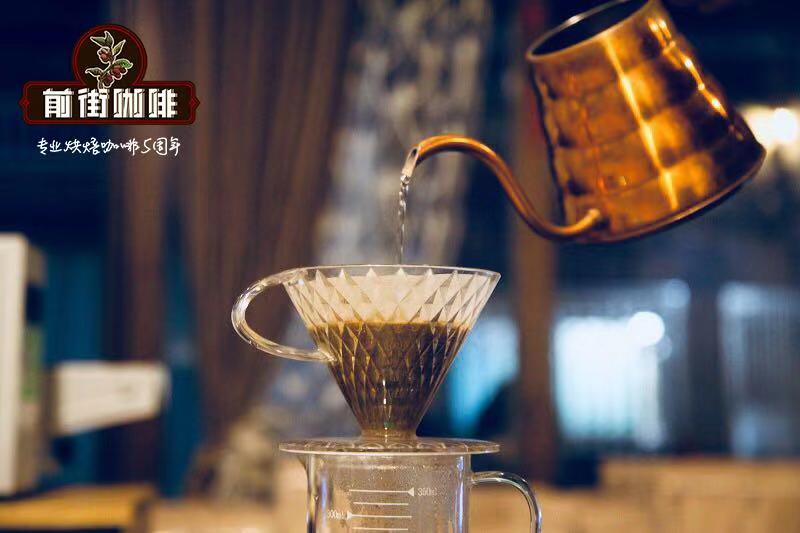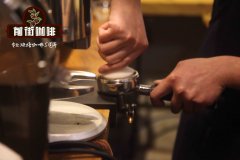Which is the better roasting degree of Kenyan coffee beans? a brief introduction to the moderate roasting flavor of Kenyan coffee beans

Professional coffee knowledge exchange more coffee bean information please follow the coffee workshop (Wechat official account cafe_style)
Brief introduction to roasting of Kenya AAasali Coffee in Qianjie
Kenyan coffee is mostly planted on the slopes near Mount Kenya, about 1500 ~ 2100 meters above sea level. This height is suitable for the development of coffee bean flavor. Due to the lower temperature and slow growth in the mountain area, the aromatic components of coffee beans have been fully developed, and the sour taste is more obvious. Texture is also harder. Kenyan coffee is Arabica, mainly washed, there are four common varieties: Bourbon, Typica, Kents, Riuri 11 and so on.
Among them, Bourbon's direct line SL28 and SL34 are the main varieties of Kenyan boutique coffee, both of which are cultivated by the Kenyan Scott laboratory. These two varieties adapt to the high phosphate soil in Kenya, thus giving birth to the acidity and sweetness of berries that fascinate sentient beings! Kenyan coffee trees can bloom twice a year. Most coffee trees bloom in March and April after the long rainy season, and the harvest season lasts from October to the end of the year. Some coffee trees blossom in October or November and are harvested in July of the following year. Kenyan coffee has always been picked by hand, and farmers harvest only red ripe coffee fruit, and each tree is picked again about every ten days or so.
Producing area: Kirin Yajia kirinyaga, Kenya
Altitude: 1500-1900 m
Variety: SL28 & SL34
Treatment: washing treatment
In terms of raw beans, both beans are washed, so there is more silver skin left on the bean surface. [Kiambu] the bean variety is SL28, which looks like an oval shape with a relatively uniform particle size, gray and a little dark green on the color, and smells like grass green. The beans in the Kirinyaga producing area of Kirin may have a uniform grain size because of the composition of SL28 and SL34, but some oval shape is longer and some shorter, the color is gray with yellowish color, and it smells faint citrus flavor.
Comparison of baking techniques
[Kiambu producing area]
Roaster Yangjia 800N (baking capacity 300g)
The furnace temperature is 170℃ and the firepower is 100. the throttle is opened at 390 ℃, and the firepower remains unchanged. When the furnace temperature is 149℃, the bean meter turns yellow, the grass smell disappears completely, and enters the dehydration stage.
7: 14 "after dehydration, the firepower and throttle remain the same." 7: 30 "is the appearance of wrinkles and black markings on the bean table, and the smell of toast changes to coffee, which is a prelude to an explosion. At 8 '20`, the blast begins, the throttle opens 4, and the firepower is reduced to 50. After an explosion, the development time is 1: 50 ". At 188 ℃, the firepower is reduced to 30, and the temperature rises to 193.3 ℃.
END
Important Notice :
前街咖啡 FrontStreet Coffee has moved to new addredd:
FrontStreet Coffee Address: 315,Donghua East Road,GuangZhou
Tel:020 38364473
- Prev

What do you mean by matching beans before baking and after baking? several coffee beans are better.
Professional coffee knowledge exchange more coffee bean information Please follow the coffee workshop (Wechat official account cafe_style) the basics of bean blending there are two kinds of coffee beans, each with its own unique characteristics. Arabica coffee beans grow at high altitudes and are widely considered to be the best quality coffee beans, despite their different tastes and growing areas. Soft aftertaste of caramel and
- Next

Mozart coffee bean flavor hand-made Mozart coffee musician series coffee Mozart
Professional coffee knowledge exchange more coffee bean information please follow the coffee workshop (Wechat official account cafe_style) Costa Rica can appreciate Mozart 1900 meters Costa Rica country: Origin: Tarrazu height: 1900 meters processing: raisins Honey processing results: SHB species: Caturra taste description: blackberries, plums, oranges, raisins, raisins, toffee sugar, Karen
Related
- Beginners will see the "Coffee pull flower" guide!
- What is the difference between ice blog purified milk and ordinary milk coffee?
- Why is the Philippines the largest producer of crops in Liberia?
- For coffee extraction, should the fine powder be retained?
- How does extracted espresso fill pressed powder? How much strength does it take to press the powder?
- How to make jasmine cold extract coffee? Is the jasmine + latte good?
- Will this little toy really make the coffee taste better? How does Lily Drip affect coffee extraction?
- Will the action of slapping the filter cup also affect coffee extraction?
- What's the difference between powder-to-water ratio and powder-to-liquid ratio?
- What is the Ethiopian local species? What does it have to do with Heirloom native species?

